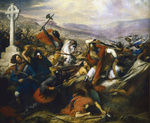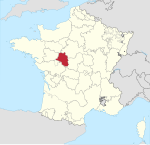Roman Catholic Archdiocese of Tours

The Archdiocese of Tours (Latin: Archidioecesis Turonensis; French: Archidiocèse de Tours) is a Latin Church archdiocese of the Catholic Church in France. The archdiocese has roots that go back to the 3rd century, while the formal erection of the diocese dates from the 5th century. The ecclesiastical province of Tours corresponds with the late Roman province of Tertia Lugdunensis. During Breton independence the see of Dol briefly exercised metropolitical functions (mainly tenth century). In 1859 the Breton dioceses except that of Nantes were constituted into a province of Rennes. Tours kept its historic suffragans of Le Mans, Angers together with Nantes and a newly constituted Diocese of Laval. In 2002 Tours lost all connection with its historic province, all its previous suffragans depending henceforth on an expanded province of Rennes (corresponding to the Brittany and Pays de la Loire administrative regions). Tours since 2002 has become the ecclesiastical metropolis of the Centre administrative region.
Excerpt from the Wikipedia article Roman Catholic Archdiocese of Tours (License: CC BY-SA 3.0, Authors, Images).Roman Catholic Archdiocese of Tours
Quai Paul Bert, Tours Paul Bert
Geographical coordinates (GPS) Address Nearby Places Show on map
Geographical coordinates (GPS)
| Latitude | Longitude |
|---|---|
| N 47.4 ° | E 0.69 ° |
Address
Quai Paul Bert
37000 Tours, Paul Bert
Centre-Val de Loire, France
Open on Google Maps











